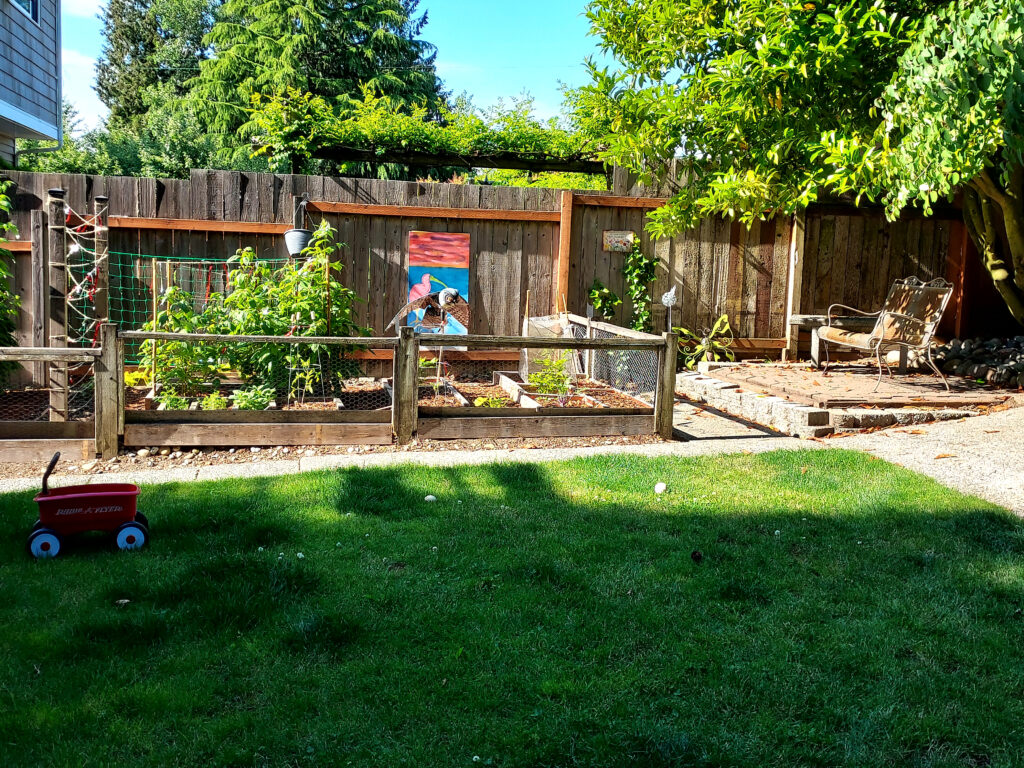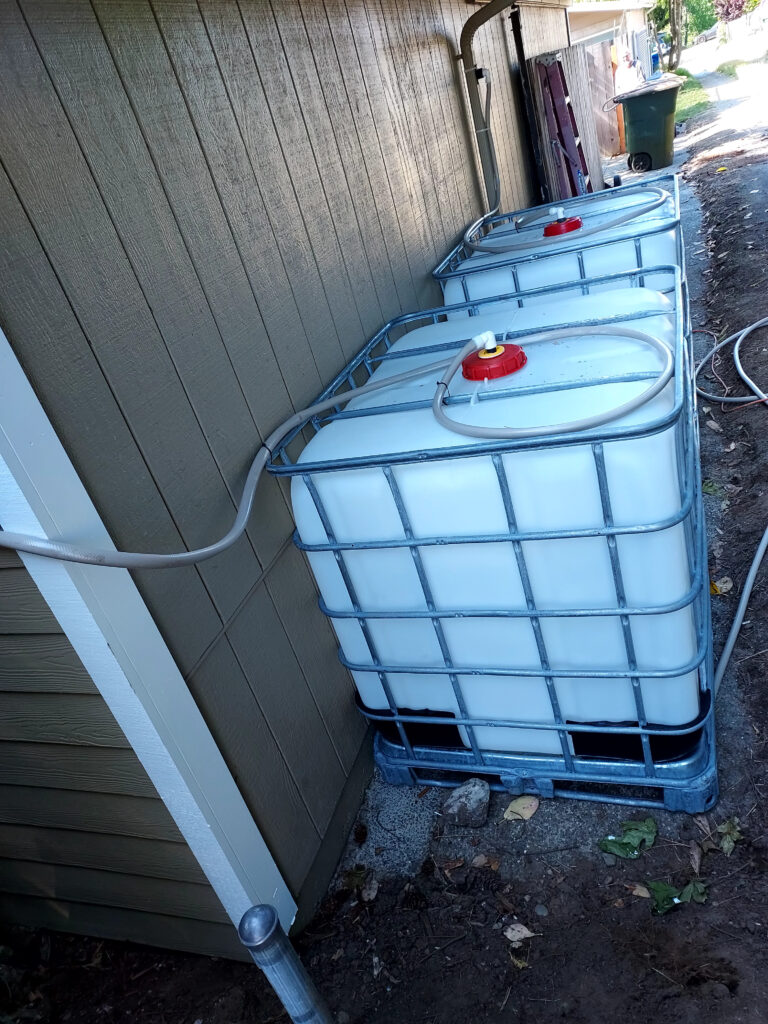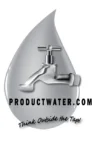Transforming a 1950s detached garage into a powerful garage rainwater harvesting system demonstrates how homeowners can achieve complete irrigation independence with strategic retrofitting. This comprehensive case study reveals how a simple garage rainwater harvesting installation captured 5,000 gallons annually from just 600 square feet of roof space, eliminated municipal water dependence for outdoor use, and created expandable water storage using repurposed materials. Whether you’re a homeowner exploring sustainable irrigation solutions or a contractor seeking profitable installation opportunities, this proven system shows exactly how older structures can become valuable water assets through strategic design and available rebate programs.

Project Overview:
The Results: Complete Garden Water Independence Achieved
This detached garage retrofit demonstrates what’s possible when homeowners think strategically about water collection. What was once 70 years of wasted rainwater running into alleys has been transformed into a system that delivers complete garden water independence for this property. Achieving garden water independence means never relying on municipal water for outdoor irrigation again.
Proven Performance Data:
- 600 square feet of garage roof generates substantial collection capacity
- 6,000 gallons available April-October (16 inches of rainfall) during peak irrigation season
- 7,500 gallons November-March (20 inches of rainfall) for stormwater management
- 100% irrigation needs satisfied for two consecutive years
- Zero municipal water used for outdoor irrigation since installation
- Expandable modular design that grows with your needs
The system strategically operates year-round with seasonal functionality: active collection during growing season and stormwater flow control during winter months. This dual-season approach maximizes both water capture and municipal stormwater management benefits.
How It Works: Dual-Season Rainwater System Design
The success of this rainwater system design lies in its intelligent seasonal operation that maximizes water capture when needed most while providing stormwater benefits year-round. This proven rainwater system design eliminates complexity while delivering consistent results.
Active Collection Season (April-October) – Seasonal Water Collection: This seasonal water collection approach focuses maximum capture during peak irrigation demand. The seasonal water collection strategy includes:
- New gutters on both sides of garage direct flow to strategic diverters
- Downspout diverters redirect water into two 300-gallon IBC totes
- Natural 2-foot elevation drop provides gravity-fed pressure to garden
- 6,000 gallons of collection capacity perfectly matches peak irrigation demand
Winter Stormwater Management (November-March): Effective stormwater management protects infrastructure while maintaining system benefits. This stormwater management approach includes:
- Diverters closed, directing flow through standard downspouts
- 7,500 gallons of roof runoff managed through controlled flow system
- Stormwater flow rate reduction before entering city sewer system
- IBC totes protected from freezing while maintaining infrastructure benefits
Smart Expansion Design – Modular Rainwater Storage: Modular rainwater storage allows seamless capacity increases as needs grow. This modular rainwater storage system enables: Individual tanks connect horizontally using hydraulic pressure principles. Each additional tank integrates through bottom-connection delivery systems, creating seamless capacity increases. The recent 660-gallon expansion demonstrates this approach—what took 3 days initially required only 2 hours to expand.Overflow Protection – Rainwater Overflow Prevention: Intelligent rainwater overflow prevention eliminates system failures through smart design. This rainwater overflow prevention system works through: The system eliminates overflow issues through natural check valves (water level in fill hose prevents additional flow when tanks reach capacity), while the main collection system redirects excess flow to municipal outlets.
Investment & Getting Started: Your Rainwater Collection Cost Guide
This project showcases how strategic timing and available incentives make rainwater collection cost surprisingly accessible for homeowners nationwide. Understanding rainwater collection cost helps homeowners budget effectively for water independence.
Phase 1 Investment – Rainwater Rebate Programs: Leveraging rainwater rebate programs can eliminate upfront costs entirely. These rainwater rebate programs provided:
- Timeline: 3 days installation
- Cost: $500 service charge (RainWise rebate program covered 100% of materials/labor)
- Outcome: Complete functional rainwater collection system
Phase 2 Expansion – IBC Tote Installation: Professional IBC tote installation ensures reliable expansion capacity. This IBC tote installation included:
- Timeline: 2 hours installation
- Cost: $1,000 total (materials and labor)
- Added capacity: 660 gallons storage
- Demonstrates scalable modular growth approach
Calculate Your Potential – Roof Water Collection Calculator: Using a roof water collection calculator helps determine your property’s potential. Any roof water collection calculator will show that a 600-square-foot roof like this garage generates significant water volumes—your larger roof likely offers even greater potential. Use Google Maps to measure your roof area, then access online calculators to determine collection capacity.
Find Your Rebates – Rainwater Harvesting Incentives: Researching rainwater harvesting incentives can dramatically reduce project costs. Available rainwater harvesting incentives include: Visit RainPlan.org to locate incentive programs nationwide. Many regions offer substantial rebates similar to the RainWise program that made this installation essentially free to start.
IBC Tote Selection – Used IBC Totes: Selecting quality used IBC totes ensures safe water storage at lower costs. When purchasing used IBC totes: Purchase only totes that previously held water-soluble materials. Avoid any containers that stored chemicals. Secondary market options work perfectly and cost significantly less than new tanks.
No Permits Required – Rainwater Collection Permits: Understanding rainwater collection permits simplifies installation planning. Fortunately, rainwater collection permits are typically unnecessary: Rainwater collection is legal everywhere and typically requires no permits, making installation straightforward for homeowners and contractors.

Why This Matters: Scaling Residential Water Sustainability
This garage retrofit represents a replicable model for residential water sustainability that homeowners, contractors, and municipal planners should recognize as immediately actionable. Advancing residential water sustainability requires scalable solutions like this proven system.
For Homeowners – DIY Rainwater Harvesting: DIY rainwater harvesting offers homeowners complete control over water independence. This DIY rainwater harvesting approach proves: The math is compelling—this 600-square-foot garage roof delivers complete irrigation independence. Consider what your larger roof areas could provide. The 1,800-square-foot main house on this property captures 22,442 gallons November-March and 17,953 gallons April-October, demonstrating the massive potential most homeowners overlook.
For Contractors – Rainwater Installation Business: A rainwater installation business offers profitable opportunities in growing sustainability markets. Building a rainwater installation business benefits from: Profitable opportunities exist in residential water harvesting, especially coordinated with rebate programs. The combination of immediate rebate coverage, straightforward installation, and clear expansion pathways creates strong value propositions. Winter stormwater management benefits add municipal alignment to private benefits.
For System Reliability – Rainwater Filtration Alternatives: Exploring rainwater filtration alternatives reveals when filtration isn’t necessary. These rainwater filtration alternatives show: Two years of 100% irrigation satisfaction proves this approach works consistently. High-volume collection eliminates filtration requirements—water flows directly from storage to garden with reliable results.
Seasonal Intelligence – Year-Round Water Collection: Implementing year-round water collection maximizes system value through all seasons. This year-round water collection strategy includes: The dual-season operation model maximizes benefits: active collection during growing season, stormwater management during high-rainfall months. This approach transforms every drop of annual rainfall into either immediate garden value or municipal infrastructure benefit.
Expandable Future – Scalable Rainwater Systems: Designing scalable rainwater systems ensures long-term adaptability and growth. These scalable rainwater systems offer: Modular design means homeowners start affordably and scale systematically. Each additional tank integrates seamlessly through horizontal hydraulic connections, making capacity increases simple and cost-effective.
This installation by Product Water LLC demonstrates that practical water independence begins with strategic thinking about existing roof assets. Every structure represents overlooked water capture potential that can meaningfully transform both household operations and community resilience. The path from wasted runoff to complete irrigation independence is more accessible than most homeowners realize.
Find available funding Rainplan
Seattle stormwater management 700 Million Gallons
